Tempus
page 2
| x |
|
|
|
|
|
|
|
|
|
|
|
|
|
|
|
|
|
|
|
|
|
|
|
|
|
|
|
|
|
|
|
|
|
|
|
|
|
|
|
|
|
|
|
|
|
|
|
|
|
|
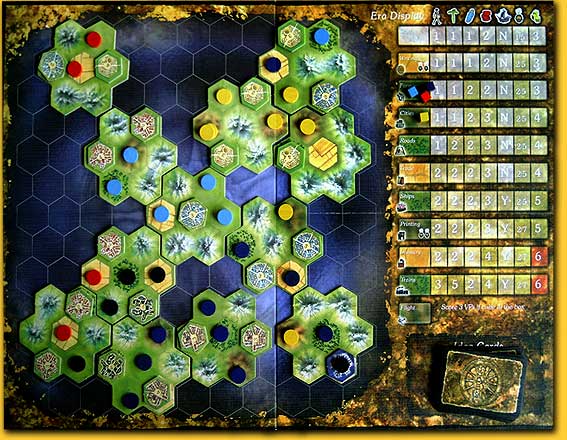 |
|
|
|
|
|
|
| x |
|
|
|
|
|
|
|
|
|
|
|
|
|
|
|
|
|
|
|
|
|
|
|
|
|
|
|
|
|
|
|
|
|
|
|
|
|
|
|
|
|
|
|
|
|
|
|
|
|
|
| Because space is limited, each player is in search for free space: grassland good to prosper, or one of the further fields where a next town can be build. Lakes can be crosed with virtual canoes, but using the seas requires the advancement to the era ‘ships’. |
|
|
|
|
|
|
| x |
|
|
|
|
|
|
|
|
|
|
|
|
|
|
|
|
|
|
|
|
|
|
|
|
|
|
|
|
|
|
|
|
|
|
|
|
|
|
|
|
|
|
|
|
|
|
|
|
|
|
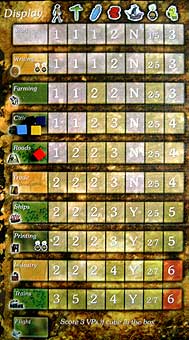 |
|
When all players have used their actions, the condition is checked to proceed to the next era; players already could have taken this into account in their actions. Each era has a type of terrain to be considered with; after the first round this is farming land, for instance, and after the second round hills. Each player now counts the amount of discs that is on such terrain. Each city counts as one point, and the idea cards that depict the same terrain count as one point also. There are specific idea cards ‘education’ that give an additional point. This total marks the player who may proceed; the other players stay in the current era but automatically advance to this era next round before the advancement check is done again.
 |
|
|
|
|
|
|
| x |
|
|
|
|
|
|
|
|
|
|
|
|
|
|
|
|
|
|
|
|
|
|
|
|
|
|
|
|
|
|
|
|
|
|
|
|
|
|
|
|
|
|
|
|
|
|
|
|
|
|
|
Each era has a new development hat can be used immediately: more actions to perform, a higher stacking limit, get more babies, move more or further, sea movement, and some more. In a given era this can be quite an advantage, in others it does not matter too much to enter the era a round later.
After the tenth round points are awarded for each occupied field except mountains, each city for its value, with a bonus for the player(s) who has qualified for the era ‘flight’.
|
|
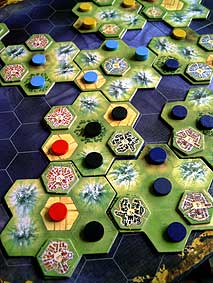 |
|
|
|
|
| x |
|
|
|
|
|
|
|
|
|
|
|
|
|
|
|
|
|
|
|
|
|
|
|
|
|
|
|
|
|
|
|
|
|
|
|
|
|
|
|
|
|
|
|
|
|
|
|
|
|
|
 |
|
|
|
|
|
|
|
|
|
|
|
|
|
|
|
|
|
|
|
|
|
|
|
|
|
|
|
|
|
|
|
|
|
|
|
|
|
|
|
|
|
|
|
|
|
|
|
The sauce of the game are the idea cards that no player wants to be without. They are too nice, or too valuable, and might frigthen off potential attackers: ‘I (may) Have (defensive) Cards In My Hands!’
Playing idea cards does not count as an action, and therefore they can be combined with other actions: have babies, with a card that temporarily raises the stacking limit; move and play a card to move an extra disc; move and play a card that allows you to attack; or the as strong considered ‘religion’ card that converts one adjacent disc into one of your own, after which it can be used, together with other discs, to build a city.
|
|
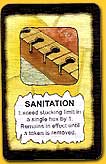 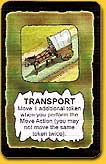 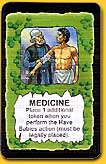  |
|
|
|
|
| x |
|
|
|
|
|
|
|
|
|
|
|
|
|
|
|
|
|
|
|
|
|
|
|
|
|
|
|
|
|
|
|
|
|
|
|
|
|
|
|
|
|
|
|
|
|
|
|
|
|
|
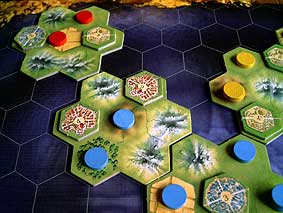 |
|
Attacking in ‘Tempus’ is possible, but not always wise. Two players who constantly hinder each other will not be able to get very far in their development, while the other players proceed to build on (larger) cities or a larger presence on the board.
Having babies and building cities, that is where it’s all about in ‘Tempus’. The player who succeeds in this the best, and spreads his discs in the best positions on the board, has a clear advantage. And then it sometimes does not even matter if he manages to qualify for the end bonus ‘flight’!
|
|
|
|
|
|
|
| x |
|
|
|
|
|
|
|
|
|
|
|
|
|
|
|
|
|
|
|
|
|
|
|
|
|
|
|
|
|
|
|
|
|
|
|
|
|
|
|
|
|
|
|
|
|
|
|
|
|
|
In our ‘first impression’ of the game we already discussed the production side; we will not enter that again. ‘Tempus’ has, just as ‘Vinci’ to which it has a clear resemblance, only slightly to do with an accurate development of a civilisation throughout times, but nevertheless it is the most accesible and playable game so far by Martin Wallace that even in a full round of five players can be played within two hours. Maybe there is no time for a second game of ‘Tempus’ right after that, but it sure tastes for more!
© 2006 Richard van Vugt
Tempus, Martin Wallace, PS Games, 2006 - 3 to 5 players, 14 years and up, 60 to 120 minutes
|
|
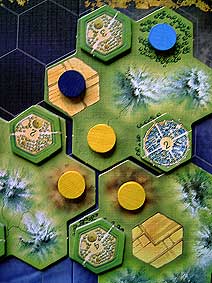 |
|
|
|
|
|
|
| x |
|
|
|
|
|
|
|
|
|
|
|
|
|
|
|
|
|
|
|
|
|
|
|
|
|
|
|
|
|
|
|
  |
|
|
|
|
|
|
|
|
|
|
|
|
|
|
|
|
|
|
|
|
|
|
|
|
|
|
|
  |
|
|
|
|
|
|
|
|
|
|
|
|
|
|
|
|
|
|
|
|
|
|
|
|
|
|
|
  |
|
|
|
|
|
|
|
|
|
|
|
|
|
|
|
|
|
|
|
|
|
|
|
|
|
|
|
  |
|
|
|
|
|
|
|
|
|
|
|
|
|
|
|
|
|
|
|
|
|
|
|
|
|
|
|
  |
|
|
|
|
|
|
|
|
|
|
|
|
|
|
|
|
|
|
|
|
|
|
|
|
|
|
|
| x |
|
|
|
|
|
|
|
|
|
|
|
|
|
|
|
|
|
|
|
|
|
|
|
|
|
|
|
|
|
|
|
| x |
|
|
|
|
|
|
|
|
|
|
|
|
|
|
|
|
|
|
|
|
|
|
|
|
|
|
|
|
|
|
|
 |
|
|
|
|
|
|
|
|
|
|
|
|
|
|
|
|
|
|
|
|
|
|
|
|
|
|
|
 |
|
|
|
|
|
|
|
|
|
|
|
|
|
|
|
|
|
|
|
|
|
|
|
|
|
|
|
 |
|
|
|
|
|
|
|
|
|
|
|
|
|
|
|
|
|
|
|
|
|
|
|
|
|
|
|
| x |
|
|
|
|
|
|
|
|
|
|
|
|
|
|
|
|
|
|
|
|
|
|
|
|
|
|
|
|
|
|
|
 |
|
|
|
|
|
|
|
|
|
|
|
|
|
|
|
|
|
|
|
 |
|
|
|
|
|
|
|
|
|
|
|
|
|
|
|
|
|
|
|
|
|